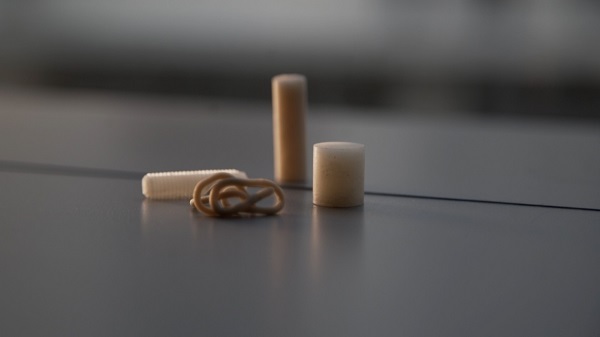Meet the new bone repair tool that dissolves in the body
In 2013, Iman Manavitehrani was collaborating with the Children’s Hospital at Westmead in Sydney, Australia, when he noticed a problem. Children who needed orthopaedic surgery often required implants, such as metal screws and pins, to heal their injuries. But then, within as little as six months, they would have outgrown them.
“A lot of kids were coming back for operations just to remove the implants,” Manavitehrani, a biomedical engineer, explains. “That’s not a good thing, because they have to have another operation all over again and are in pain. There was a surgeon there, and he told me: ‘You’re an engineer, do something about it!’”
Manavitehrani set to work and almost six years later came up with JAZBI™, a new surgical material that not only supports bone healing, but can be programmed to dissolve harmlessly in the body. It’s an innovation that could spell the end of traditional metal implant removals, which still account for around 25% of all orthopaedic operations, costing more than $122 billion US dollars globally and resulting in some 10,000 days of hospital care in the US alone.

This is not the first attempt to create implants that dissolve in the body. However, the current generation of devices have major disadvantages. They are expensive, and often leave a hole in the bone or break down into pieces – which can result in cysts, pain, inflammation and delayed healing.
“There is a substantial unmet need for optimum bioabsorbable implants,” says Maryam Parviz, a co-founder with Manavitehrani of SDIP Innovations, the San Francisco-based company aiming to bring JAZBI™ to market. “Current implants are infamous for not dissolving in the body in a timely manner and cause inflammation from acidic by products. JAZBI™ is fully reabsorbable – it breaks down into water and carbon dioxide, and provides a natural healing environment.”
The JAZBI™ polymer can be inserted into bone as a putty or as templated wedges and cubes, working as a filler to repair any damage or fix a corrective surgery in place (in the future, the team hope to develop screws and pins using the platform). By adjusting the formulations, the team can determine how long it will take to dissolve, effectively removing itself from the body without the need for another operation.
This process is another key advantage of JAZBI™ over traditional implants. Thanks to its lattice structure, the body is able to create bone inside the implant, seamlessly filling the gaps as the polymer breaks down.
“Usually, we have an interface between the implant and the tissue,” Manavitehrani says. “That interface is very important, and from a biology perspective we want the implant to integrate with bone. We designed it so the material has dynamic pores that increase the porosity over time and create enough space for the new bone to actually penetrate inside and start forming new bone.”
“This inside-out reabsorption makes a huge difference,” Parviz says. “The structure doesn’t break down into pieces, at least in the studies we have done so far. It dissolves into the body from inside to out: the material starts going away and the new bone replaces it.” The result, the team suggests, means faster and stronger healing, with the implant becoming new bone in 6-12 months.
In addition to saving the cost of hospital treatment from follow-up surgical operations, the team are also confident the implant will offer good value for money in comparison to the initial surgeries it will replace.
Even so, the product still has a long way to go before it reaches patients. As with any new composite used in the body, JAZBI™ has been going through studies and preclinical trials before receiving regulatory approval – an expensive and lengthy process. Now, thanks to a New South Wales Medical Devices Fund grant, the team have the support they need to complete their pre-clinical studies and prepare for their first in human trial.
“One of the main uses of the grant will be to conduct the preclinical studies required by regulatory bodies,” Parviz says.
These comparisons with the current gold standard treatments will, the team hopes, show their product is safe and effective. If so, JAZBI™ can then start changing the face of orthopaedic surgery for adults and children around the world.
Updated 5 years ago